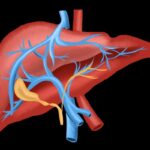Restoration of vision using the power of epigenetics.
What if we look at aging as a disease? When you look at the changes that older people undergo, aging does have some of the characteristics of a disease. In the process of aging, cells start dying at a faster rate, and because of this, the functions of several organs gradually stop working – bones become more fragile, the brain’s ability to process information deteriorates, the liver and kidneys become less efficient, etc.
The aging process begins with changes in the cell, namely in the chromosomes that contain our genetic material. Our chromosomes are made up of a collection of proteins and nucleic acids called chromatin. And the total amount of chromatin decreases with age. Another change in chromosomes is associated with special controllers that regulate the activity of our genes. These controllers are called epigenetic modifications. In our genome, these modifications form the so-called epigenetic landscape, where some genes remain active, while others are suppressed and can no longer function. In fact, with age, there is a global change in the accessibility of genetic information contained in our cells. Without this information, we cannot function normally. This information landscape can be further affected by regular damage to our DNA – the constant cycles of breaks and repairs significantly influence gene regulation and contribute to premature aging. This is why people who work under stressful conditions and in environments that damage our cells and genetic material tend to age earlier.
This epigenetic landscape is important early in our lives. One of these epigenetic marks consists of methyl groups, and the process of adding such groups is called methylation. Without this control system, there would be no differentiation of cells to specific types in our body. But as we age, the chromosomes in our cells collect methyl groups that do not have a physiological function; the addition of methyl groups as we age is a process so universal that we can compute from the number of these methyl tags added to DNA the epigenetic age. In a sense, this is a “noise” that probably interferes with the normal functioning of cells. Methylation at specific points in genes can be used to calculate the “internal” age of a cell, the so-called methylation age.
It is important to note that the limitations imposed by these epigenetic regulators and epigenetic noise can be removed. If you take fully differentiated cells and add a certain set of proteins to their habitat, all marks are removed, and these cells will turn into the so-called pluripotent stem cells are capable, like embryonic ones, to give rise to all types of cells. Thus, it is possible to delay rapid aging in children, which is caused by extremely rare genetic disorder progeria.
The question arises. If it is possible to remove these regulatory epigenetic markers, and thus alter the fate of the cell, then it is likely to use the same approach to reverse aging. A team of researchers led by David A. Sinclair, an aging expert, tried to figure it out.

They were interested in repairing nerve damage in the eyes of mice without reworking nerve cells there. The goal was necessary to restore lost sight as a result of nerve damage in mice without remaking the nerve cells there.
Previously, other research groups have discovered genes, so called Yamanaka factors (Oct4, SOX2, KLF4 and Myc (OSKM)) that regulate the tuning of special programs within cells. David A Sinclair and his lab first excluded Myc from this group of genes. The reason was that Myc could accelerate the aging process in mice. Then, the researchers activated the three remaining Yamanaka factors, which they called OSK for short, in connective tissue cells from old mice.
They then mapped a profile of active genes in older cells before OSK activation and the next five days after OSK activation. David Sinclair’s group noticed that the profile of “old” cells changed significantly and became more similar to the profile observed in cells of younger mice. At the next stage, David Sinclair and his colleagues developed a special vector based on the virus, which contained all three OSK genes. This vector could now be injected into the body and activated there. Before starting the next round of experiments, David Sinclair and his colleagues also verified that this OSK-carrying vector did not have any toxic effects on the animals used in the study. After constructing the vector and making sure it was safe, David Sinclair and his colleagues took a group of mice with optic nerve damage and injected these vectors into an area of the eye called the vitreous humor.
As a result, it was demonstrated that injection of a vector with these gene helped the ends of the optic nerve regrow. Protective and supportive effects on the optic nerves in mice with the OSK vector were present even in old mice, although older mice required longer treatment. OSK factors present in the vector activated another gene called STAT3, which is known to support nerve growth.
The advantage of the vector used in this experiment is that production of OSK proteins starts quickly and levels rise rapidly, thus activating other genes that can induce nerve cell growth. Interestingly, the David Sinclair’s team also found that damage to nerve cells resulted in an increase in their epigenetic age, and the use of the OSK-carrying vector in turn decreased the epigenetic ages of damaged cells. Moreover, the genes responsible for detecting light and transmitting signals between nerves were markedly stripped of the methylation tags, so they became active again. Removal of methylation marks or demethylation was decisive for the positive effect of the OSK-carrying vector.
There is a group of genes called TET that are responsible for DNA demethylation. If the Tet1 or Tet 2 genes are blocked in nerve cells, OSK cannot promote nerve growth.It has also been found that OSK can also protect human nerve cells exposed to the chemotherapeutic drug vincristine from damage. So, at this stage, the team led by David Sinclair has established that the OSK vector they created can repair nerves damaged by medical agents and physical trauma.
A third option was to test whether such vectors could be used to treat diseases that cause blindness, such as glaucoma. During glaucoma, the pressure inside the eye increases so much that it causes the death of retinal nerve cells. There have already been successful attempts to use gene therapy to treat this disease. The OSK treatment helped restore nerve endings in the eyes of mice with experimental glaucoma, and vision in these animals was restored.
The final stage of the experiment led by David Sinclair team was an attempt to restore vision in elderly mice with deteriorating vision. At about the age of 11-12 months, vision in these animals deteriorates markedly. Treatment of these mice with OSK vectors for 4 weeks partially improved their vision. The restoration of vision was not due to the regrowth of nerve endings, but due to changes in gene activity caused by OSK factors. In the process of aging, the activity of 494 genes has changed. For example, aging has caused a suppression of genes responsible for registering visual signals, which may explain why vision in mice can deteriorate without actually losing nerve cells. When the OSK triad was activated, 90% of these genes returned to levels seen in young mice and the previously blocked genes became active again.
The researchers also found that aging also creates its own “signature” of methylation tags for certain genes, including genes responsible for normal nerve cell activity. OSK factors use TET genes to eliminate this aging signature. Without genes Tet1 and Tet3 and removal of methylation tags, vision in elderly mice could not be restored.
It is noteworthy that the positive effects of OSK vectors were absent in mice at the age of 18 months – at this age, damage to the cornea of the mouse occurs, so it is much more difficult to restore vision by simply changing the activity of genes in nerve cells.
This unique experiment was very extensive, and David Sinclair and his team tested several variants and possible uses of the vector with the three OSK genes they created. A series of experiments gave the scientific community several important conclusions:
- Aging can be reversed even in the cells with an already established fate
- Nerve cells are one of the most complex and differentiated cells in the body, and their recovery is considered one of the most difficult. However, using certain genetic factors, it was possible to restore the endings of nerve cells after injury or illness, and it was also possible to restore their activity to previous levels.
- The regenerative effects of the factors used did not include erasure of cell identity.
- Based on the association of OSK with demethylation factors, it can be assumed that methylation plays an important role in the aging process.
- It is possible that epigenetic reprogramming can be used as a therapy under certain conditions.
This approach has many potential applications, and this work opens the door to a very interesting and exciting direction in science.
Literature
- Tsurumi, A. and L. Willis. [July 2012] Global heterochromatin loss: A unifying theory of aging? –Epigenetics, V. 7, Issue 7, pp. 680-688.
- Baedke, J. [December 2013]. The epigenetic landscape in the course of time: Conrad Hal Waddington’s methodological impact on the life sciences. Studies in history and philosophy of science. Part C: Studies in history and philosophy of Biological and Biomedical Sciences, V. 44, Issue 4, Part B, pp. 756-773
- Sen, P. et al. [August 11, 2016]. Epigenetic mechanisms regulating longevity and aging. Cell, V. 166, №4, pp. 822-839
- Takahashi, K. and S. Yamanaka [August 25, 2006]. Induction of pluripotent stem cells from mouse embryonic and adult fibroblast cultures by defined factors. Cell, V. 126, №4, pp. 663-676
- Ocampo, A. et al. [December 15, 2017]. In Vivo Amelioration of Age-Associated Hallmarks by Partial Reprogramming. Cell, V. 167, № 7, pp. 1719-1733.e12. Retrieved December 15, 2020 from: https://www.ncbi.nlm.nih.gov/pmc/articles/PMC5679279/
- Liu, X. et al. [November 27, 2008]. Yamanaka factors critically regulate the developmental signaling network in mouse embryonic stem cells. Cell Research, V. 18, pp. 1117-1189. Retrieved December 14, 2020 from: https://www.nature.com/articles/cr2008309
- Hoffmann J. W. et al. [January 29, 2015]. Reduced expression of MYC increases longevity and enhances healthspan. Cell, V. 160, №3, pp. 477-88.
- Vitreous body. Anatomy. Britannica.com. Retrieved December 15, 2020 from: https://www.britannica.com/science/vitreous-body
- Wu, X. and Y Zhang [September 2017]. TET-mediated active DNA demethylation: mechanism, function and beyond. Nat. Rev. Genetics, V. 18, № 9, pp. 517-534.
- Gao, Y. et al. [April 4, 2013]. Replacement of Oct4 by Tet1 during iPSC Induction Reveals an Important Role of DNA Methylation and Hydroxymethylation in Reprogramming. Cell Stem Cell, V. 12, Issue 4, pp. 453-469.
- Glaucoma. Mayo Clinic. Retrieved December 15, 2020 from: https://www.mayoclinic.org/diseases-conditions/glaucoma/symptoms-causes/syc-20372839#
- Stamer, W. D. [May 2012]. The Cell and Molecular Biology of Glaucoma: Mechanisms in the Conventional Outflow Pathway. Investigative Ophtalmology and Visual Science. V. 52, Retrieved December 15, 2020 from: https://iovs.arvojournals.org/article.aspx?articleid=2126939
- Krishnan, A. et al. [December 15, 2016]. Overexpression of Soluble Fas Ligand following Adeno-Associated Virus Gene Therapy Prevents Retinal Ganglion Cell Death in Chronic and Acute Murine Models of Glaucoma. J. Immunol., V. 197, №12, pp. 4626-4638. 13.
Recent Blog Posts
-
 13 Jun 2025MTL Epitherapeutics and RI-MUHC Develop Early Prostate Cancer Blood Test
13 Jun 2025MTL Epitherapeutics and RI-MUHC Develop Early Prostate Cancer Blood Test -
 11 Jan 2025EpiAge Research Publication Signals a New Era in Understanding Biological Aging
11 Jan 2025EpiAge Research Publication Signals a New Era in Understanding Biological Aging -
 18 Nov 2024EpiMedtech Global Announces FDA Registration of EPIAGE, the First Epigenetic Age Test Registered by the FDA
18 Nov 2024EpiMedtech Global Announces FDA Registration of EPIAGE, the First Epigenetic Age Test Registered by the FDA -
 18 Nov 2024EpiMedTech Global Validates Unique epiCervix HPV Combo Test for Cervical Cancer Detection
18 Nov 2024EpiMedTech Global Validates Unique epiCervix HPV Combo Test for Cervical Cancer Detection -
 31 Oct 2024HKG epiTherapeutics’ MetaGen Genetic Risk Assessment Test Receives FDA Registration, Now Available in the U.S.
31 Oct 2024HKG epiTherapeutics’ MetaGen Genetic Risk Assessment Test Receives FDA Registration, Now Available in the U.S. -
 31 Oct 2024EpiMedTech Global Launches epiGeneComplete: A Breakthrough Genetic and Epigenetic Test for Comprehensive Health Diagnostics
31 Oct 2024EpiMedTech Global Launches epiGeneComplete: A Breakthrough Genetic and Epigenetic Test for Comprehensive Health Diagnostics -
 30 Oct 2024Enhanced Early Detection of Liver Cancer
30 Oct 2024Enhanced Early Detection of Liver Cancer -
 08 Oct 2024Are Microarrays Still Reliable? How Next-Generation Sequencing Outperforms Traditional Methods
08 Oct 2024Are Microarrays Still Reliable? How Next-Generation Sequencing Outperforms Traditional Methods



